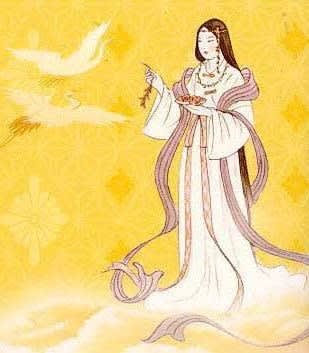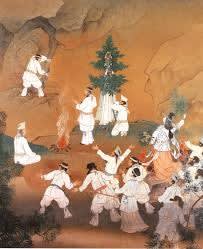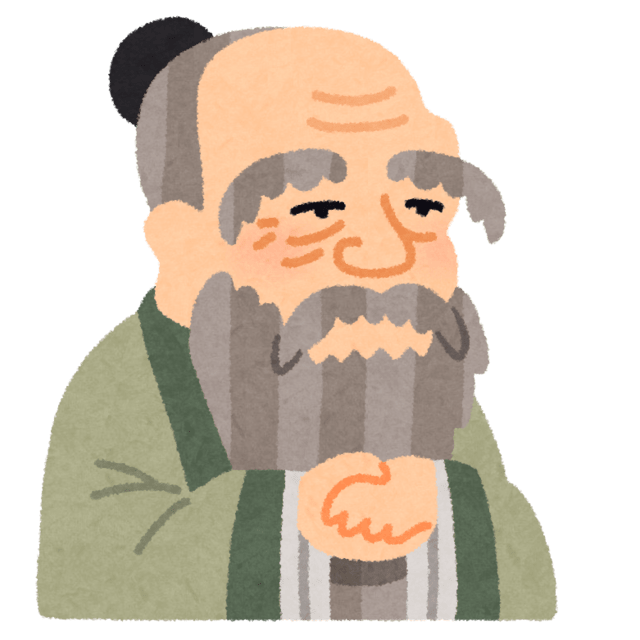An Intoroduction to Shinto(Soul of Japan)

What is Shinto?
Shinto is the indigenous faith of the Japanese people. In general, Shinto is more than a religion and encompasses the ideas, attitudes, and ways of doing things that have become an integral part of the Japanese people for the better part of 2000 years. Shinto, unlike other major religions, does not have a founder, nor does it possess sacred scriptures or texts. On a collective level Shinto is a term which denotes all faiths, however, on a personal level, Shinto implies faith in the deity (kami), incorporating the spiritual mind of the kami through worship and communion.
Shinto arose with the advent of Japanese civilization and has progressively developed through the centuries until modern times. The word Shinto first appears in the Nihonshoki (The Chronicles of Japan) in the early 8th century with the intention of distinguishing this native faith from the recently arrived religions of Buddhism, Confucianism and Taoism. The word Shinto (“Way of the Gods”) was adopted from the written Chinese (shén dào) combining two Chinese characters: “shin”, meaning kami; and “tō”, or “do” meaning a philosophical path or study.

Concept of Kami
In order to comprehend the concept of kami, it is important to erase the preconception caused by the word god, an English translation that is often used for the word kami. In Shinto, there is no faith in the concept of an absolute god who is the creator of both human beings and nature.
It might be best to quote the opinion of Norinaga Motoori, a scholar in the late 18th century who wrote, “Whatever seemed strikingly impressive, possessed the quality of excellence and virtue, and inspired a feeling of awe was called kami .” Here “the quality of excellence” refers to an enormous power which has great influence over many things. It is beyond human power or human capability and brings good fortune and happiness to man but at the same time it may bring misfortune or evil as well.

Japanese Myth
The ancient Japanese never divided spiritual and material existence, but considered that both were inseparable, seeing everything in a spiritual sense. In other words, they did not draw a border between a certain object and the work of that object.
According to Shinto cosmology, the world is created with the appearance of a single kami who represents the universe, next to appear are the kami of birth and growth. From heaven, a male kami and a female kami appear who give birth to various deities, the land of Japan and her nature as well as her people. The Shinto faith begins with a belief in this mythology. Therefore, Shinto does not recognize the difference or discontinuation between kami, nature or human beings.

Buddhism and Shinto
Buddhism was introduced to Japan in the 6th century, and soon began to permeate into the lives of the Japanese. Since there was no conflict between Buddhism and Shinto, they merged with each other to form a unique amalgamation. Even in the Imperial Palace, the Emperor of Japan (Tenno) revered and worshipped Buddha as well as the Shinto kami. This fusion of kami and Buddha is called ‘Shin-Butsu-Shugou’, and this state continued until the late 19th century. This is the main reason why many Japanese people do not make a clear distinction between Buddhist temples and Shinto shrines or between Buddha and kami. In other words, they are both respectful entities to be worshipped by Japanese people.
Counting the number of official followers of Shinto in Japan is no easy task since an individual who practices any Shinto ritual is counted. According to statistics, there are currently 119 million official followers. It is said that “life” events are handled by Shinto and “death” or “afterlife” events by Buddhism. In this sense one can understand that most Japanese who take part in Shinto rituals also take part in Buddhist ancestor worship.

English is posted from Jinja Honcho HP.
Read the [PDF]Soul of Japan





神社の参拝は、身と心を清めるところから始まります。
Before approaching the shrine is to purify the body and mind.
鳥居をくぐったら、手水舎に行きます。
Passing through the shrine gate, go to the place for purifying hands and mouth.

右手に柄杓を持って、左手を洗います。
Holding dipper in your right hand, wash your left hand.
柄杓を左手に持ちかえて、右手を洗います。
Then, holding dipper in your left hand, wash your right hand.
もう一度柄杓を右手に持ち、左手の手のひらに水を受けて口をすすぎます。
Returning dipper to your right hand, pour water in palm of your left hand rinse your mouth.
そして、もう一度左手を清めます。
And wash your left hand again.
柄杓を立てて柄に水を流します。
Hold the dipper vertically so remaining water runs down and purifies the handle.
これを、最初に柄杓に組んだ1杯の水で行います。
The above is carried out with one dipper-full of water.
これが手水舎で身を清める作法です。
That's all. Thank you.


What is Shinto?
Shinto is the indigenous faith of the Japanese people. In general, Shinto is more than a religion and encompasses the ideas, attitudes, and ways of doing things that have become an integral part of the Japanese people for the better part of 2000 years. Shinto, unlike other major religions, does not have a founder, nor does it possess sacred scriptures or texts. On a collective level Shinto is a term which denotes all faiths, however, on a personal level, Shinto implies faith in the deity (kami), incorporating the spiritual mind of the kami through worship and communion.
Shinto arose with the advent of Japanese civilization and has progressively developed through the centuries until modern times. The word Shinto first appears in the Nihonshoki (The Chronicles of Japan) in the early 8th century with the intention of distinguishing this native faith from the recently arrived religions of Buddhism, Confucianism and Taoism. The word Shinto (“Way of the Gods”) was adopted from the written Chinese (shén dào) combining two Chinese characters: “shin”, meaning kami; and “tō”, or “do” meaning a philosophical path or study.

Concept of Kami
In order to comprehend the concept of kami, it is important to erase the preconception caused by the word god, an English translation that is often used for the word kami. In Shinto, there is no faith in the concept of an absolute god who is the creator of both human beings and nature.
It might be best to quote the opinion of Norinaga Motoori, a scholar in the late 18th century who wrote, “Whatever seemed strikingly impressive, possessed the quality of excellence and virtue, and inspired a feeling of awe was called kami .” Here “the quality of excellence” refers to an enormous power which has great influence over many things. It is beyond human power or human capability and brings good fortune and happiness to man but at the same time it may bring misfortune or evil as well.

Japanese Myth
The ancient Japanese never divided spiritual and material existence, but considered that both were inseparable, seeing everything in a spiritual sense. In other words, they did not draw a border between a certain object and the work of that object.
According to Shinto cosmology, the world is created with the appearance of a single kami who represents the universe, next to appear are the kami of birth and growth. From heaven, a male kami and a female kami appear who give birth to various deities, the land of Japan and her nature as well as her people. The Shinto faith begins with a belief in this mythology. Therefore, Shinto does not recognize the difference or discontinuation between kami, nature or human beings.

Buddhism and Shinto
Buddhism was introduced to Japan in the 6th century, and soon began to permeate into the lives of the Japanese. Since there was no conflict between Buddhism and Shinto, they merged with each other to form a unique amalgamation. Even in the Imperial Palace, the Emperor of Japan (Tenno) revered and worshipped Buddha as well as the Shinto kami. This fusion of kami and Buddha is called ‘Shin-Butsu-Shugou’, and this state continued until the late 19th century. This is the main reason why many Japanese people do not make a clear distinction between Buddhist temples and Shinto shrines or between Buddha and kami. In other words, they are both respectful entities to be worshipped by Japanese people.
Counting the number of official followers of Shinto in Japan is no easy task since an individual who practices any Shinto ritual is counted. According to statistics, there are currently 119 million official followers. It is said that “life” events are handled by Shinto and “death” or “afterlife” events by Buddhism. In this sense one can understand that most Japanese who take part in Shinto rituals also take part in Buddhist ancestor worship.

English is posted from Jinja Honcho HP.
Read the [PDF]Soul of Japan





神社の参拝は、身と心を清めるところから始まります。
Before approaching the shrine is to purify the body and mind.
鳥居をくぐったら、手水舎に行きます。
Passing through the shrine gate, go to the place for purifying hands and mouth.

右手に柄杓を持って、左手を洗います。
Holding dipper in your right hand, wash your left hand.
柄杓を左手に持ちかえて、右手を洗います。
Then, holding dipper in your left hand, wash your right hand.
もう一度柄杓を右手に持ち、左手の手のひらに水を受けて口をすすぎます。
Returning dipper to your right hand, pour water in palm of your left hand rinse your mouth.
そして、もう一度左手を清めます。
And wash your left hand again.
柄杓を立てて柄に水を流します。
Hold the dipper vertically so remaining water runs down and purifies the handle.
これを、最初に柄杓に組んだ1杯の水で行います。
The above is carried out with one dipper-full of water.
これが手水舎で身を清める作法です。
That's all. Thank you.






















